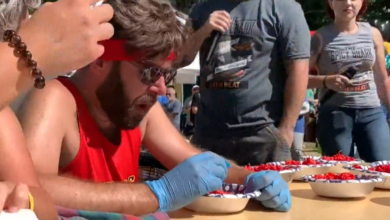What do to with solar eclipse glasses

Picture this: It’s Monday afternoon, and after a long drive into the path of totality or a well-timed lunch break in the midst of a busy shift, you’ve just watched the moon take the sun’s place in the sky.
It was a near-indescribable display of cosmic wonder and majesty, lasting just a few precious minutes and viewed safely, for the most part, only by the grace of a wafer-thin pair of sun-proof glasses.
But now, it’s over. So what do you do with the shades?
As countless sun-gazers settle in for the long wait until their next solar eclipse, many may be asking themselves the same question. Eclipse glasses are typically mass-produced from cardboard frames and polymer filters, so some may be tempted to toss them out, but a number of organizations are hoping you’ll think twice before you do.
Here are a few options to consider:
For a sunny day
Whether you plan on trekking down to Chile for the annular eclipse this fall, or Greenland or Morocco for 2026 and 2027’s total eclipses, there’s something to be said for being prepared well in advance.
According to NASA, a typical pair of eclipse glasses (that are compliant with ISO 12312-2 safety standards) can be reused indefinitely if kept in good condition, meaning this past Monday may not have been the last chance to get your money’s worth.
“I will definitely be hanging on to mine for Morocco,” CTV News science and technology specialist Dan Riskin said in an interview on CTV News Channel Tuesday. “They’re great souvenirs.”
On a less once-in-a-lifetime note, an undamaged pair of eclipse glasses work just as well on the unobscured sun, which can be a spectacle of its own.
“They will protect you,” Riskin said. “The sun is something that … we never look at, because it hurts … They’re best for eclipses, but those glasses, they still have a use.”
The sun is expected to reach its peak activity for the current roughly 11-year solar cycle by 2025, meaning visible phenomena like sunspots will be more common.
If the eclipse left you with the spark of a new interest in astronomy, there’s no need to wait to learn more.
Donation drives
For minimalists, the photos and memories are likely enough of a keepsake, but that doesn’t mean your eclipse glasses are doomed to head straight to a landfill. There’s no shortage of people just as excited for next time, with eyes they’re just as eager to protect.
Astronomers Without Borders (AWB), an educational non-profit based in Calabasas, Calif., has spent more than a decade collecting and recycling eclipse glasses from around the world for future celestial events.
This year’s eclipse marks the return of the group’s recycling and distribution drive, gathering used glasses from hundreds of local governments, libraries and retail stores across North America.
Along the eclipse’s path here in Canada, the city of Cornwall, Ont., has opened a collection point at a local fire station, alongside the Montreal Planetarium and the Jack Miner Migratory Bird Sanctuary in Kingsville, Ont. Eyewear retailer Warby Parker, with four stores across the GTA, will be accepting donations to pass along to AWB for the rest of April.
Ottawa City Coun. David Hill has also offered his ward’s constituency office as a collection point for Eclipse Glasses USA, a manufacturer that recycles pairs.
Riskin said Monday’s eclipse was special because it was an in-person, non-digital phenomenon, but also because of its power to bring people together.
“It was a shared event,” he said. “All along the beach, there were people cheering together, erupting into applause, and that’s where the goosebumps happen.”




